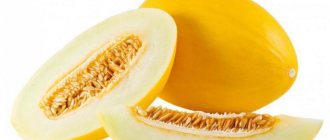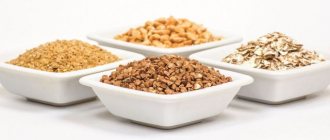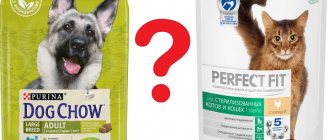It’s rare that an owner offers his dog pure meat: it’s expensive and not very healthy. By-products are usually mixed with porridge and vegetables. But a dog’s stomach can’t digest just any porridge: some cereals cause pain and discomfort.
Among these harmful dishes is also barley, which is useful, according to many. What is the harm, is it worth offering your dog pearl barley and how to prepare it correctly, we will consider in the article.
The benefits of cereals
Pearl barley is a type of barley grain processed in a certain way (by grinding). Hence the name, consonant with “pearl” - pearls, which it looks a little like.
A close “relative” of pearl barley is barley groats, which is also made from barley, but chopped and not processed. It has the following advantages:
- high in calories, which allows the animal to easily get enough. And its ability to increase 5 times during cooking will be appreciated by owners who want to reduce the cost of feeding their pet;
- rich in proteins, vitamins, micro and macroelements. Contains magnesium, potassium, phosphorus and iron. All this gives the dog strength and strengthens the immune system, allowing the development of muscle mass;
- a good source of fiber, which is extremely important in animal diets. In small doses it improves digestion;
- This is a rather coarse grain that makes the stomach “work” to digest it. That is why some experts recommend including it in the animal’s diet without fail;
- due to its mucilaginous properties, it is a good means of combating diarrhea.
Is it possible to cook cereals for dogs? Which?
Possibility of preparing peas, millet, pearl barley for dogs.
This is interesting: Karachentsov and Cabo Roman
Each dog requires special attention in communication, training, and nutrition. The smaller the dog, the smaller its nutritional needs. However, the diet should include everything you need.
Peas
. There is no consensus on adding peas to a dog’s diet. Some believe that in general all groups of legumes are very poorly digested. Others call peas a healthy food for a dog's body.
Peas are primarily a source of complex carbohydrates, proteins, lipids and vitamins of various groups. A dog's digestive system differs from a human's in that it has fewer digestive enzymes, which leads to gas and bloating. After which diarrhea, vomiting, and blood particles in the stool may appear.
Therefore, it is recommended to serve peas in the form of soup and additives to other foods.
Millet
. Millet is also difficult for the dog’s digestive system to digest. Volvulus may occur. Various studies by scientists have shown that millet does not contain any special beneficial properties, therefore this type of cereal should only be added to the diet in portions, and not entirely.
Pearl barley porridge
It is given to dogs in minimal quantities, as it is very difficult and takes a long time to digest. If you decide to feed your dog pearl barley, it must be cooked especially carefully to make it soft. It’s best to give it mixed with rolled oats.
Why can't you feed it?
The main disadvantage of pearl barley is that many dogs are unable to digest it.
In the best case, it will come out of the stomach exactly in the form in which it got there - whole grains. Diarrhea will begin, the dog will defecate near the bowl, unable to bear it.
In the worst case, pearl barley that is not digested in the stomach will cause constipation in the dog. A side, but extremely unpleasant consequence will be refusal to eat: unprocessed food in the stomach will create a feeling of false satiety and kill your appetite.
Regularly feeding a dog, especially an elderly one or one who is simply sedentary, with pearl barley porridge is fraught with rapid obesity. Gaining excess weight will lead to other health problems.
Finally, pearl barley is a common allergen. In this case, after a couple of meals the animal will begin to itch, the skin under the fur will become bright pink, bald spots will appear, and in more severe stages, otitis media will develop and tearing will begin.
The most useless and harmful cereals for dogs
Well, we found out which porridge can be given to a dog often and which one cannot. And now it’s time to discuss what kind of porridge you should not feed your dog at all:
- Bean, lentil or pea porridge
- bean porridge should not be given to dogs due to their extremely poor digestibility. A dog that has dined on, for example, pea porridge may experience colic, bloating, and constipation. By the way, people prone to kidney and gastrointestinal diseases should not regularly eat cereals made from legumes;
This is interesting: Tumanov Andrey Vladimirovich 6 Acres
Corn porridge
– eating it carries the risk of developing volvulus. The fact is that corn porridge is poorly digested, clumping in the digestive organs. In addition, it is considered one of the most allergenic;
Semolina
– this product made from ground wheat is not so much dangerous as it is useless for the dog’s body. The only compelling argument in favor of eating semolina is the lack of weight in animals. This is not to say that semolina porridge is dangerous, but if the dog eats it often, digestive disorders are possible;
- such products are undesirable in a dog’s diet due to the low content of dietary fiber, vitamins and minerals after processing. Plus, instant cereals often contain a lot of sugar, flavorings and preservatives.
How and with what to give?
Barley should be included in the diet occasionally, alternating with other, more easily digestible cereals: rice, buckwheat and oatmeal. The best option is 1, maximum 2 times a week.
Barley should make up no more than 1/3 of the daily diet, mixed with meat and boiled vegetables. For better digestibility, it is cooked in beef broth.
If a dog loves pearl barley, then it will be willing to eat it, and it is important to calculate the serving size based on the weight of the animal in order to prevent overfeeding.
What cereals can be given to dogs, and which ones should be avoided?
There is an old saying: “Porridge is our mother!” Indeed, it is difficult to underestimate this type of food. Regular consumption of cereals improves metabolism, normalizes gastrointestinal function, supplies important vitamins and minerals, gives you a good mood and even acts as a preventive measure for the development of cancer. There is no doubt that porridge is necessary for children and adults. But is porridge necessary for dogs? Or is it better not to include such a dish in the diet of a tailed pet?
This is interesting: How to Humidify the Air in an Apartment without a Humidifier
How to cook porridge?
Dogs usually eat pearl barley with pleasure, but to please your pet, you should try to cook it as appetizing as possible.
Recipe
Here's a sample recipe:
- Prepare the broth. It is best to cook it on the bones, but then throw away the bones and do not give it to your pet. The broth is not very fatty and is filtered.
- The cereal is washed.
- Barley is poured into a pan with boiling broth. The liquid should be left two fingers more from the level at which the cereal is in the pan.
- After boiling again, the heat is reduced and the pan is covered with a lid. Cook until fully cooked for about 2 hours; periodically you need to check to see if the water has boiled away. In the middle of cooking, you can salt the porridge - a little, literally on the tip of a knife.
- Five minutes before the porridge is ready, add meat and vegetables. There is also an option in which the meat and vegetables are not boiled, but placed raw in the porridge, but here it all depends on the preferences of the animal. The main rule is not to mix raw meat and cooked vegetables, or vice versa. At the very end of cooking, add herbs (parsley, dill, even nettles, dandelion leaves if desired).
Tip : you can beat a raw chicken egg into the porridge, but you should give it no more than once a week.
How long should you cook?
Barley is a slow-cooking porridge, so you need to prepare it in advance. Usually porridge from this cereal is cooked for about two hours; if undercooked it will be tough and tasteless.
The cooking time partly depends on the variety: coarse grains take longer to cook, fine grains with almost round grains cook faster. The shelf life of the cereal also plays a role: last year’s pearl barley takes longer to cook than this year’s pearl barley. Therefore, when purchasing cereal, it is worth looking at the packaging date.
There is a secret that allows you to cook pearl barley porridge faster, literally in half an hour. To do this, you need to pre-soak it.
This is done as follows: the pearl barley is washed and filled with cold water in the proportion of 1 cup of cereal per 1 liter of water. It is left in this form for about five hours; it is most convenient to do this at night.
During this time, the cereal will absorb a lot of water; the remainder must be drained. The pearl barley will swell and become easy to cook; cooking time will take about 30 minutes.
With milk or water?
Pearl barley with milk is perfect for puppies if they are fed this porridge. For an adult dog, it is better to boil the cereal in water, since many animals develop lactose intolerance with age. The best option would be to cook it in beef broth - this way it is easier to digest and seems more satisfying to the animal.
Pregnant or breastfeeding
Pearl barley does not play a significant role in the diet of pregnant bitches. You can give it, but a little at a time, given that the dog during this period needs food high in protein, since it is the main building material.
This cereal promotes weight gain, and overly fat animals have a difficult birth, so it is better to reduce the amount of cereal products during this period.
A nursing dog can eat pearl barley in the same quantities as before pregnancy.
Puppies and lactating bitches - feeding features
Large breed puppies can be safely fed pearl barley porridge, preferably cooked in milk. It allows you to quickly saturate a growing body, but cereals should be introduced into the diet no more than 1-2 times a week. It is also not recommended to feed pearl barley to puppies under 6 months of age.
Pregnant and lactating dogs can be given cereal in small portions, since the protein included in its composition serves as the main building material for the body. Since pearl barley promotes weight gain, overly fat animals should be given it in limited quantities.
According to statistics, the most sensitive stomachs to pearl barley are dogs of miniature breeds (Yorkshire terriers, Chihuahuas, toy terriers), as well as German shepherds. Otherwise, there are no specific restrictions on the consumption of such porridge.
Breed exceptions
There is no specific ban on pearl barley for any breed. But breeds with a weak stomach, prone to digestive problems, will perceive this porridge worse than others. According to statistics, dogs of small and miniature breeds, for example, toy terriers, Chinese crested dogs, chihuahuas and others, are prone to sensitive digestion.
Problems are especially common in Maltese, Yorkshire terriers and, strange as it may sound, in German shepherds. When giving pearl barley to these breeds, special care should be taken.
Differences in the diet of dogs of large, medium, small breeds
It has long been proven that small dogs have a much faster metabolism than large dogs. This is easy to check - just look at how a dachshund or Yorkshire terrier behaves, and compare it with a massive Newfoundland or Caucasian.
Accordingly, the diet for them should be compiled individually. Small dogs can be given high-calorie foods - they eat little (due to their size) and instantly burn the resulting calories while running around.
But for massive dogs who like to eat a hearty meal and then take a nap, such porridges are contraindicated. Simply because they are eaten in large quantities and the resulting energy is not consumed, which means it is stored as fat.
What to do if things get bad?
If a dog has eaten pearl barley and feels sick, this may be due to the following.
Allergy. If, after introducing porridge into the diet, the animal begins to itch frequently, irritation and bald spots appear on the skin - it is most likely an allergy. In this situation, the dog needs to be shown to a veterinarian to accurately determine the allergen. The doctor may prescribe antihistamines. Barley will have to be completely excluded from the dog’s menu.
Diarrhea. It will not be difficult to recognize this problem: the pearl barley will come out of the dog’s stomach almost in its original form. This type of diarrhea can be treated at home. It is enough to give activated carbon (1 tablet per 10 kg of animal), skip several feedings and provide access to water to avoid dehydration.
Tinctures of burnet or serpentine also have a beneficial effect - they have an astringent effect. The optimal diet for the next few days is rice porridge and fermented milk products, fatty and heavy foods are unacceptable.
Constipation. The opposite effect of diarrhea after barley is also possible. In this situation, the dog will become lethargic and refuse food. She will make significant efforts to empty her bowels, “push”, but to no avail.
Helping your pet is easy: just add a couple of tablespoons of vegetable or castor oil to the food (1-3, depending on the size of the animal). It's worth trying to feed prunes. You can also purchase a special laxative for dogs for these purposes - it is available in veterinary pharmacies without a prescription.
What to replace or supplement with?
Dogs digest buckwheat and rice porridge best; they are also allowed to offer oatmeal and, occasionally, semolina. It is best to give pearl barley in smaller quantities than rice and buckwheat.
Millet and wheat porridge can be a replacement option for it - they are not recommended for animals, but a number of dog breeders give them without problems.
Another option for pearl barley is mixing it with other cereals. But it is important to ensure that it is completely boiled, because its cooking time is longer than that of other cereals.











